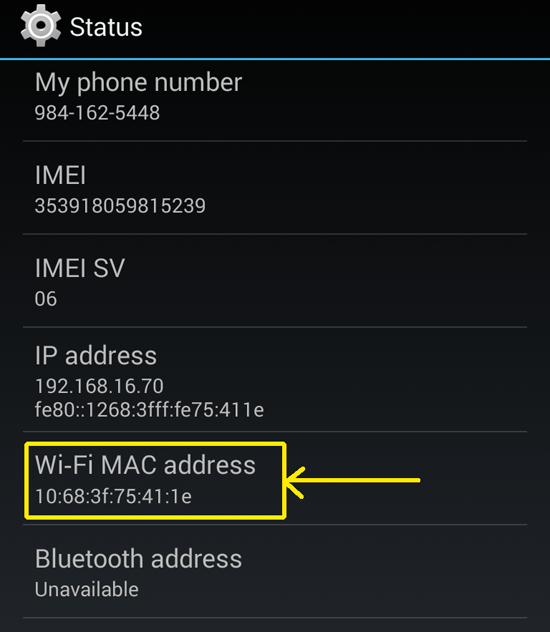

- #Iphone unable to join network mac address password
- #Iphone unable to join network mac address license
This is because the WISPr requests are made at very short intervals, and as soon as one of the queries is able to reach the designated server, any web redirection or splash page display process that is performed in the background is aborted. If the Web Authentication is being used with any of the controller's splash page features (URL provided by a configured RADIUS server), the splash page may never be displayed. This interception leads to a Web Authentication process, which will be completed normally. This HTTP request triggers a Web Authentication interception in the controller as any other page requests are performed by a wireless client. The actual authentication is done in the background every time the device connects to a new SSID. This enables the user to provide his credentials to access the Internet. This mechanism is used for the device to automatically open a web browser when a direct connection to the Internet is not possible. Some devices, such as Apple iOS devices, use a mechanism which can determine if the device is connected to Internet, based on an HTTP WISPr request made to a designated URL. WISPr is a draft protocol that enables users to roam between different wireless service providers. The typical result is an ‘Unable to join the network’ message on the iOS device.Īpple iOS Clients 'Unable to join the network' - Fast SSID Change and Apple ClientsĬSCui95938 fast Switching SSDi and IPAD IssueĢ) WISPr Protocol: iOS Clients and Web Authentication The setting causes the controller to deauthenticate the client from the existing WLAN once the client attempts to associate to another. Most Apple iOS devices tend to move quickly between WLANs and therefore have issues with the default ‘fast ssid change disabled’ on Cisco WLCs. In either case I would still auto quarantine as suggests.This feature is disabled by default, and prevents clients from quickly moving from one WLAN to another.
#Iphone unable to join network mac address password
a Wi-Fi password on one unlocked iPhone can be shared with another iPhone/iPad by to holding them next to each other) Requires not telling the kids the password to the other SSID used by the parents on a different VLAN, and making sure the kids cannot get the password from your other devices (e.g. This way firewall rules can just be applied to the entire VLAN of that SSID.
#Iphone unable to join network mac address license
These are locally controllable/configurable, have a built in RADIUS server, and they do not require license fees in order to download the latest firmware, and while they are no longer being made they are still supported for a few more years.ī.) if you don’t want to use wifi enterprise security, just Get a VLAN aware wireless Access Point and give the kids their own SSID associated with a unique VLAN #. I suggest an HP/Aruba IAP access point used from eBay. Use mdns forwarding between subnets if required). non-IOT devices, and put those on a separate VLAN & SSID. Use this Enterprise security on SSID’s that have user-configurable devices (I.e.

Get a Wi-Fi AP that has both a built-in radius server and VLAN support, and use WPA2-AES (Enterprise) or newer Enterprise Wi-Fi security which is generally the strongest practical way of identifying each unique user on any Wi-Fi network.
:max_bytes(150000):strip_icc()/location-services-59c2b87daf5d3a00100417b7.gif)
Note: After the MAC Address randomization is turned off, the device will be discovered as a new device on the next connection to the network. Turning it off in your own network will not stop you from enabling it in other Wifi networks, such as Public WiFi. All the existing rules configured for that device may not work any more.įor Firewalla to identify and protect your device properly, please follow the instruction below to turn off MAC Randomization on the network monitored by Firewalla. With MAC Randomization turned on, Firewalla may not be able to track the device because it may be discovered as a new device when it uses another random mac address to connect to the network. It is often called Randomized MAC or Private Address. Nowadays many devices support MAC Address Randomization, which enables the device to use a different random MAC address for each Wi-Fi SSID, to prevent the device's activity and movement being tracked on networks.


 0 kommentar(er)
0 kommentar(er)
